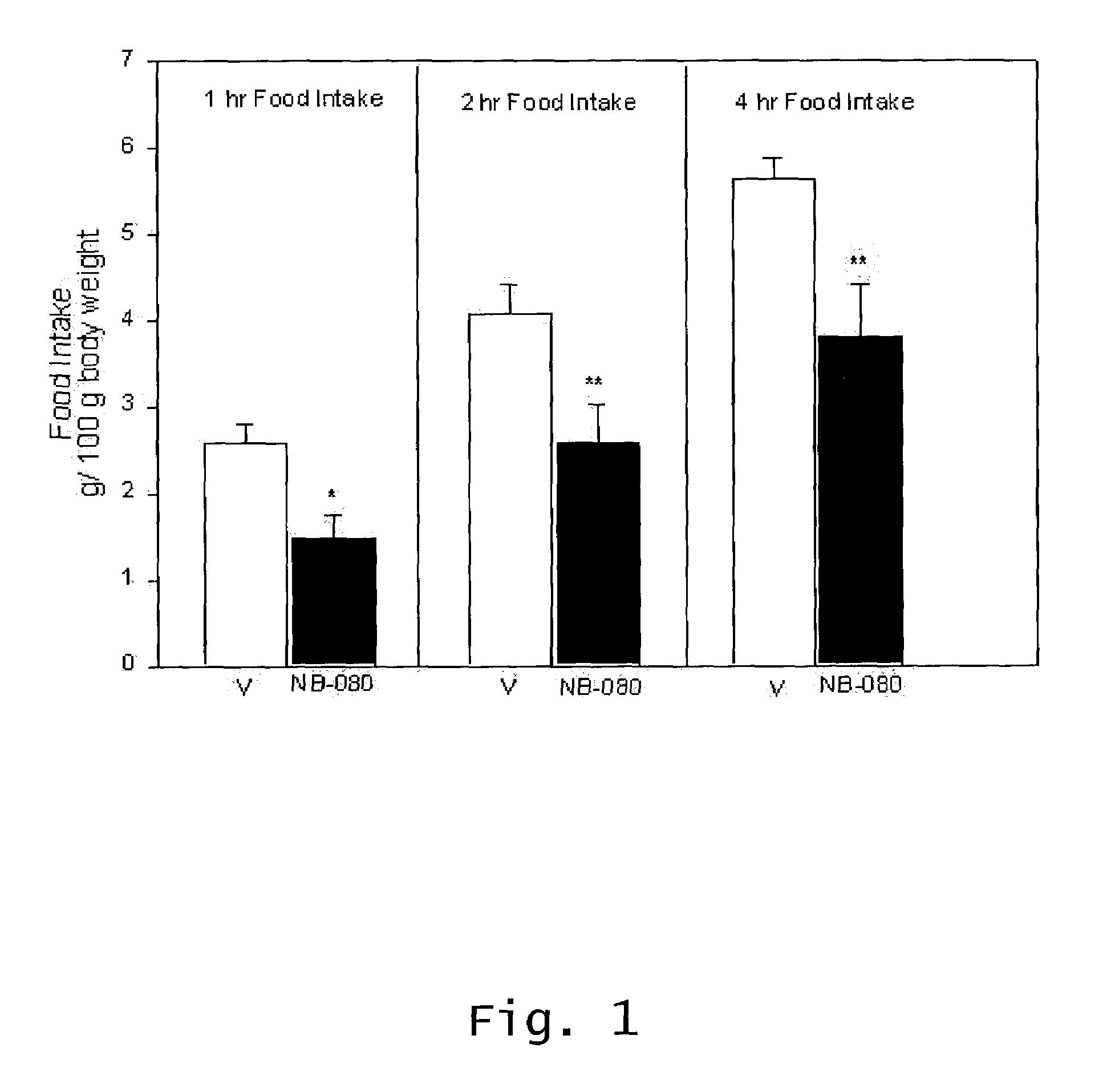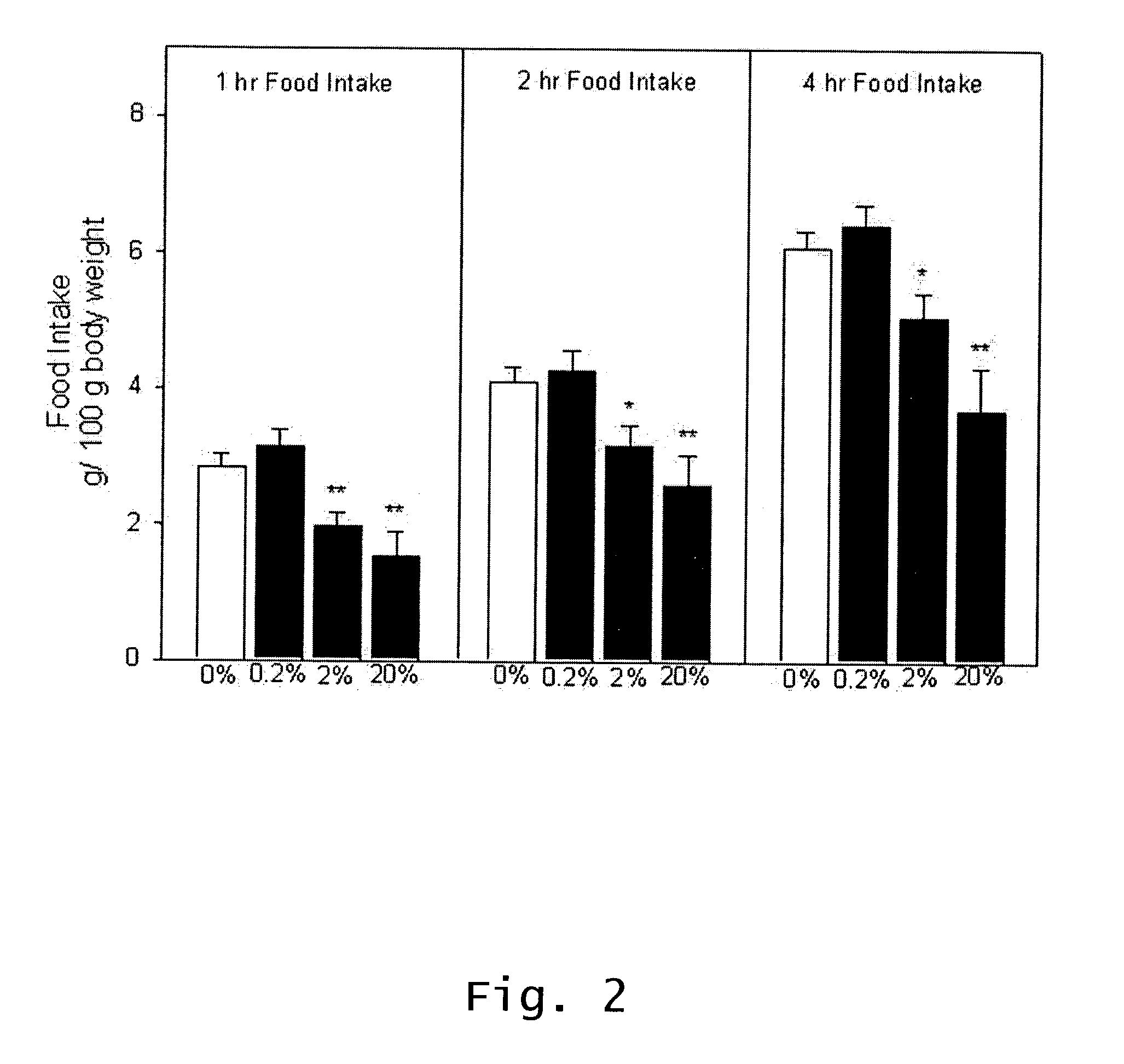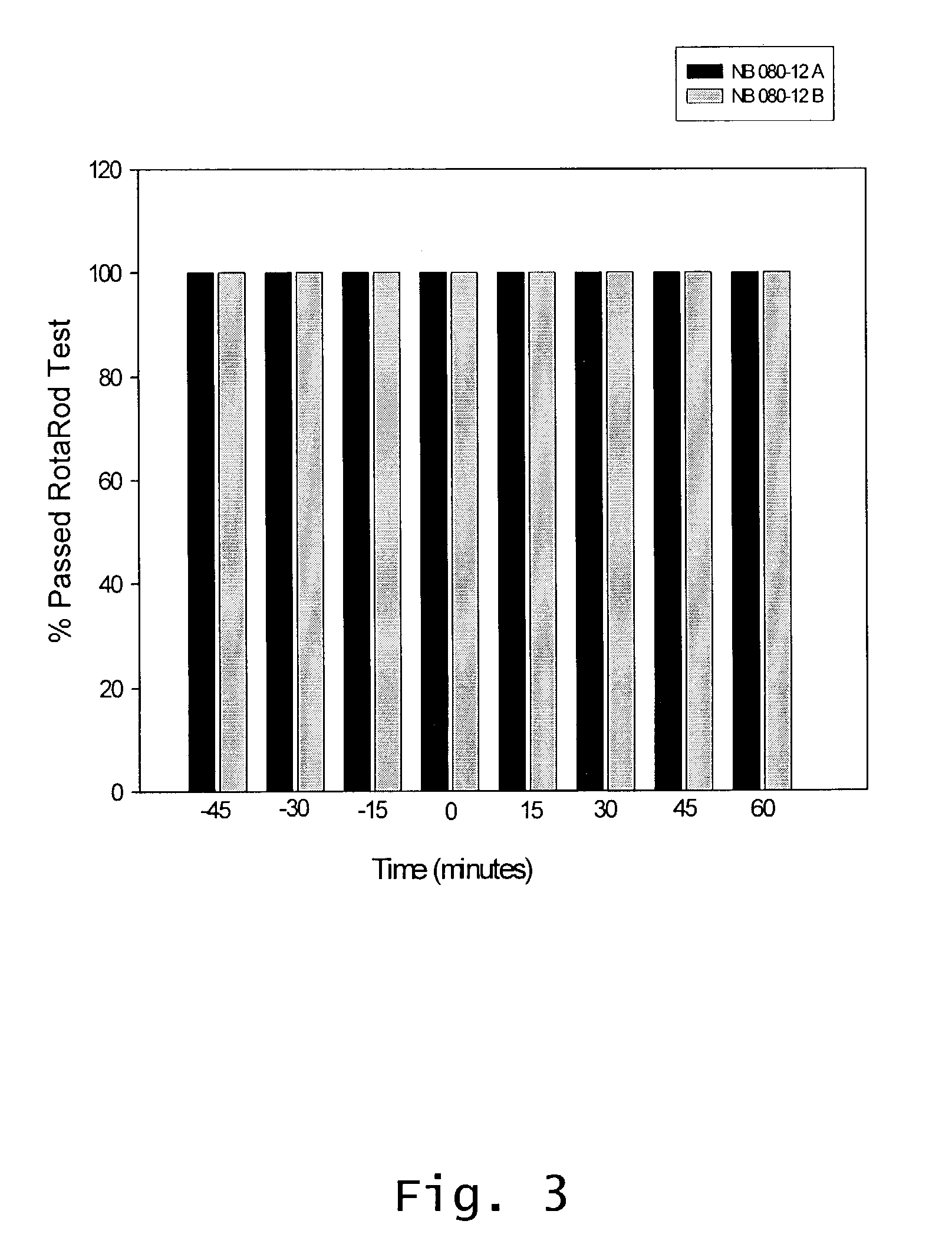Inhibition of olfactory neurosensory function to treat eating disorders and obesity
a neurosensory function and olfactory technology, applied in the direction of instruments, aerosol delivery, drug compositions, etc., can solve the problems of insufficient understanding of complex genetic influences, small and non-lasting effects of weight loss, and insufficient clinically supported approaches to target the mechanisms of lipid metabolism and fat storage, so as to reduce food intake, modulate food intake, and treat or prevent eating disorders.
- Summary
- Abstract
- Description
- Claims
- Application Information
AI Technical Summary
Benefits of technology
Problems solved by technology
Method used
Image
Examples
example 1
Effect Of Intranasal Administration Of Diltiazem On Food Intake In Food Deprived Rats
[0064]This Example shows that Diltiazem administration results in a reduced food intake in an animal model.
[0065]Male Sprague-Dawley rats, 150–175 g at the start of the experiments (Charles River Laboratories, Wilmington, Mass.) were housed individually in suspended wire mesh cages; maintained on a reversed-lighting schedule (lights-on at 7 p.m., lights-off at 7 a.m.); and acclimated to our climate controlled animal facility and to the test diets for 7 days prior to experimentation. As the experiments in food-deprived rats were performed during the dark cycle, a dull red light (25 watt) was used to help with placement and weighing of the food jars.
[0066]Rats had ad libitum access to tap water and food (Rodent Laboratory Chow No. 5001-pellet form, Purina) on non-testing days. A mush diet, used for experiments on food-deprived animals, and composed of equal parts by weight of ground rodent chow (Purin...
example 2
[0071]A dosing study was performed to determine an optimum concentration for the effect observed in Example 1.
[0072]More than 80 rats were used in this feeding study. Diltiazem was administered intra-nasally, 20 μL / nostril. The drug dosage was from 0.02–2 mg / kg of body weight (0.02, 0.2, and 2 mg / kg bodyweight, respectively. Control animals were administered 20 μL / nostril of formulation without Diltiazem.
[0073]One hour later pre-weighed food jars were introduced into the cage and a sheet of clean white paper placed under each cage to catch any spillage. The amount of food consumed after 1, 2 and 4 hours was determined to the nearest 0.01 g.
[0074]The result, shown in FIG. 2, were consistent with earlier observations and showed a strong trend toward an optimal dose of 0.2–20% w / v solution of diltiazem.
example 3
Effect Of Intranasal Administration Of Diltiazem On Animal Performance In Rota-Rod Test
[0075]This Example reports activity testing of rats administered Diltiazem intranasally.
[0076]Two groups of rats (12 rats each) were tested. Each rat went through 8 sessions on the rota-rod: 3 sessions before drug administration (pretest, time −45, −30, and −15 minutes); 1 session immediately after the drug was administered (time 0); and 4 sessions after drug administration (time 15, 30, 45, and 60 minutes).
[0077]A speed of 6 rpm was used, and diltiazem was administered, as described above, intra-nasally at 1 mg / kg.
[0078]There were no indications of a difference in activity between the drug and vehicle group, thereby showing that the drug did not adversely affect the animals' balance and agility as determined by Rota-Rod testing.
PUM
| Property | Measurement | Unit |
|---|---|---|
| Time | aaaaa | aaaaa |
| Time | aaaaa | aaaaa |
| Time | aaaaa | aaaaa |
Abstract
Description
Claims
Application Information
 Login to View More
Login to View More - R&D
- Intellectual Property
- Life Sciences
- Materials
- Tech Scout
- Unparalleled Data Quality
- Higher Quality Content
- 60% Fewer Hallucinations
Browse by: Latest US Patents, China's latest patents, Technical Efficacy Thesaurus, Application Domain, Technology Topic, Popular Technical Reports.
© 2025 PatSnap. All rights reserved.Legal|Privacy policy|Modern Slavery Act Transparency Statement|Sitemap|About US| Contact US: help@patsnap.com



